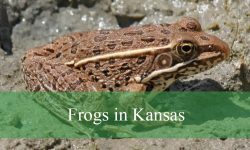Eagles in Louisiana are powerful and captivating birds that often draw attention as they glide over lakes, rivers, and open marshes. These raptors are not only impressive in size and appearance but also serve as top predators in their ecosystems, playing a key role in maintaining ecological balance.
Louisiana hosts two eagle species: the widespread Bald Eagle and the much rarer Golden Eagle. The Bald Eagle can be seen year-round across the state, especially in wetland areas, while the Golden Eagle is an occasional winter visitor, mostly appearing in northern or upland habitats during migration.
This guide highlights the two species of eagles in Louisiana with pictures and clear identification details. Exploring these birds offers a deeper appreciation for Louisiana’s rich birdlife and the unique habitats that support such remarkable wildlife.
Common Eagles Found in Louisiana
Bald Eagle (Haliaeetus leucocephalus)

The Bald Eagle is a large and powerful bird of prey, recognized as a national symbol of the United States. Adults are easily identifiable by their white head and tail, contrasting sharply with a dark brown body and wings. They have a large yellow beak and fierce yellow eyes that give them a commanding appearance. Immature Bald Eagles, however, lack the signature white plumage and are mottled brown and white for the first four to five years of life, making them sometimes hard to distinguish from Golden Eagles.
This species is among the largest raptors in North America, with a body length of about 28 to 40 inches and a wingspan that can exceed 7 feet. Females are typically larger than males, a common trait among raptors. In flight, Bald Eagles soar with flat wings and a slow, deliberate wingbeat. Their call is surprisingly weak and high-pitched—a series of chirping whistles—unlike the deep, piercing cries often portrayed in media.
Bald Eagles in Louisiana are most often found near large bodies of water, such as rivers, lakes, swamps, and coastal marshes. These habitats provide plentiful fish, their primary food source. They are opportunistic feeders and will also scavenge carrion or steal prey from other birds. Nesting usually occurs in tall trees near water, and their nests—called eyries—are among the largest of any bird species, sometimes used and expanded year after year.
In Louisiana, Bald Eagles are year-round residents, with stable populations due to conservation efforts and legal protection. They are most commonly seen in the Atchafalaya Basin, around Lake Pontchartrain, and along the Mississippi River. Winter brings an influx of migratory individuals from farther north, increasing sightings, especially in wildlife refuges and protected wetlands. Their resurgence in the state is a success story of modern conservation.
Golden Eagle (Aquila chrysaetos)

The Golden Eagle is a majestic and powerful raptor, known for its dark brown body and golden feathers on the back of its head and neck, which give it its name. Unlike the contrasting coloration of the Bald Eagle, the Golden Eagle’s plumage is more uniformly dark, and it has feathered legs all the way down to its feet. Juveniles often display white patches at the base of their tail and wings, which fade as they mature. Their sharp talons and beak are perfectly adapted for hunting live prey.
Golden Eagles are slightly larger and more agile in flight compared to Bald Eagles. They typically measure 26 to 40 inches in length with a wingspan between 6.5 to 7.5 feet. Their flight style is elegant and buoyant, with long, slightly raised wings and a tendency to soar for extended periods. Golden Eagles are known for their speed and strength, capable of diving at speeds over 150 miles per hour when targeting prey.
This eagle prefers open terrain such as mountains, cliffs, and grasslands, making it less common in Louisiana’s wetland-dominated landscapes. When Golden Eagles do appear in the state, it is typically during migration or in the winter months when individuals from the western U.S. or Canada pass through or overwinter. They hunt mammals like rabbits and ground squirrels but can also take birds and carrion when necessary.
In Louisiana, Golden Eagles are considered rare and irregular visitors. Most sightings occur in the northern and western parts of the state, especially in open country near the Arkansas or Texas borders. They may also be observed in hilly upland areas or perched on large power poles in rural landscapes. Because of their scarcity and elusive behavior, spotting a Golden Eagle in Louisiana is a special experience for birders and wildlife enthusiasts alike.
Best Places to See Eagles in Louisiana
Louisiana offers several prime locations for eagle watching, especially during the winter months when Bald Eagle activity peaks. One of the most reliable spots is Lake Martin near Breaux Bridge, where large numbers of Bald Eagles can be seen soaring above cypress swamps or perched near the water. This area is part of the Cypress Island Preserve, known for its rich bird diversity.
Another excellent destination is the Atchafalaya Basin, one of the largest swamp ecosystems in the United States. This region provides ideal habitat for nesting Bald Eagles, with sightings common near river channels, oxbow lakes, and tall snags. Boat tours through the basin often offer close-up views of eagles in their natural environment.
For those in northern Louisiana, Catahoula National Wildlife Refuge and Black Bayou Lake National Wildlife Refuge are great spots to observe both resident and migratory eagles. During winter, you may also catch rare glimpses of a Golden Eagle in these upland and open wetland habitats. Visiting these areas early in the morning or late in the afternoon increases your chances of seeing eagles actively hunting or perched.






